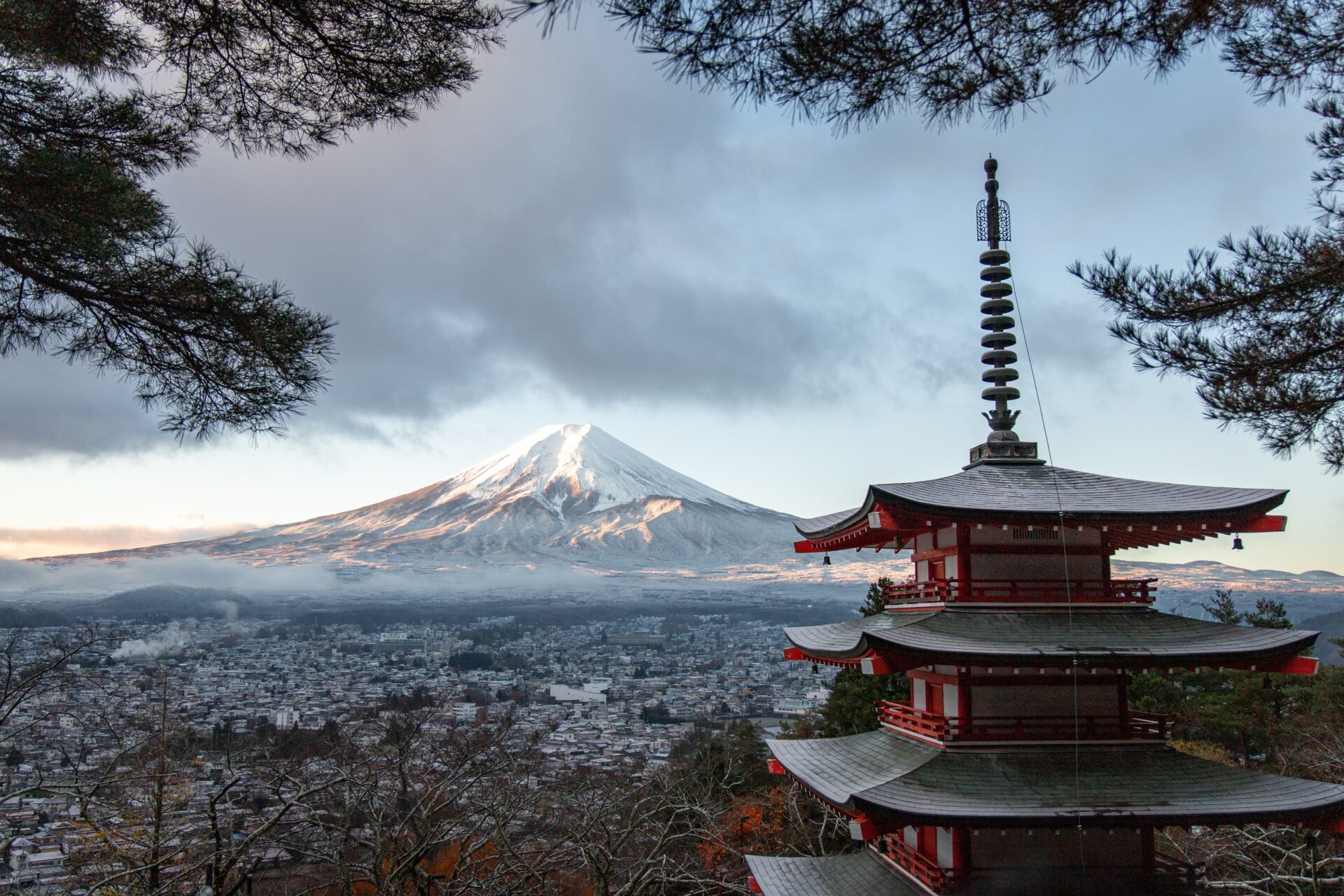If you have ever visited temples or shrines in Japan, you might have seen the multi-storied tower-like structures known as pagodas. Pagodas are deeply ingrained in Buddhist history and tradition, and these iconic buildings are cherished by many and can be seen at Buddhist temples across Asia. Japan is home to some notably beautiful pagodas in the world that are worth adding to your to-visit list. They boast impressive designs, fascinating history and unique architectural techniques which have enabled them to survive devastating earthquakes and other natural disasters for centuries.
What is a pagoda?
Pagodas are tower-like, multi-tiered structures that are often found on the grounds of Buddhist temples in Asia. Pagodas are believed to derive from the so-called stupa, a dome-shaped mound which was originally built to enshrine the remains of Buddha in ancient India. As Buddhism spread throughout Asia, the stupa became a symbolic structure at Buddhist temples. People also started to enshrine the ashes of powerful leaders, rulers, Buddhist monks and other holy people here.
After Buddhism was introduced in China, people began constructing pagodas across the country. While Indian-style pagodas were originally made from stone and had a simple shape, the Chinese built wooden pagodas which were much taller and featured multiple stories. When Buddhism was introduced in Japan around the 6th or 7th century and the construction of religious buildings began, the architectural style seen in ancient China had a significant influence on the design of Japanese pagodas.
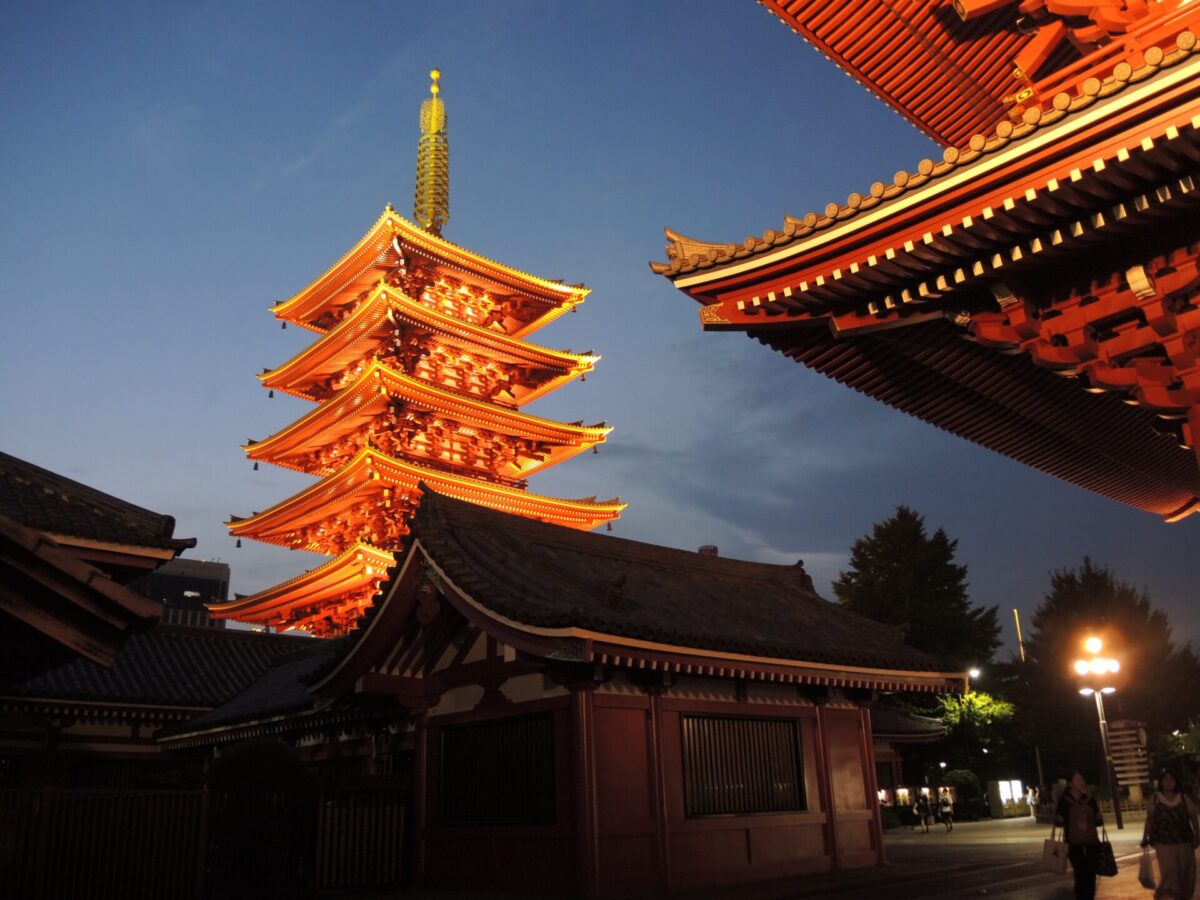
One of the most distinctive features of Japanese pagodas are the unique construction techniques used to make them able to withstand even strong earthquakes. Traditional Japanese pagodas have a massive wooden pillar called shinbashira (心柱) in the center. This pillar features flexible wooden joints and supports the entire pagoda from the bottom to the top. In this way, the shinbashira effectively absorbs earthquake tremors from inside the pagoda.
In addition, Japanese pagodas consist of multiple floors (typically three to five) which are essentially separate layers, like boxes piled on top of each other. When the ground shakes, each floor moves and sways back and forth in opposite directions – like a snake – and in this way the pagoda maintains its balance. This feature provides the structure with exceptional resistance to ground shaking, and pagodas rarely suffer any significant damage even during strong earthquakes.
Now that you know just how fascinating these impressive buildings are, let’s have a look at where you can find 5 beautiful padogas in Japan!
1. To-ji (Kyoto)
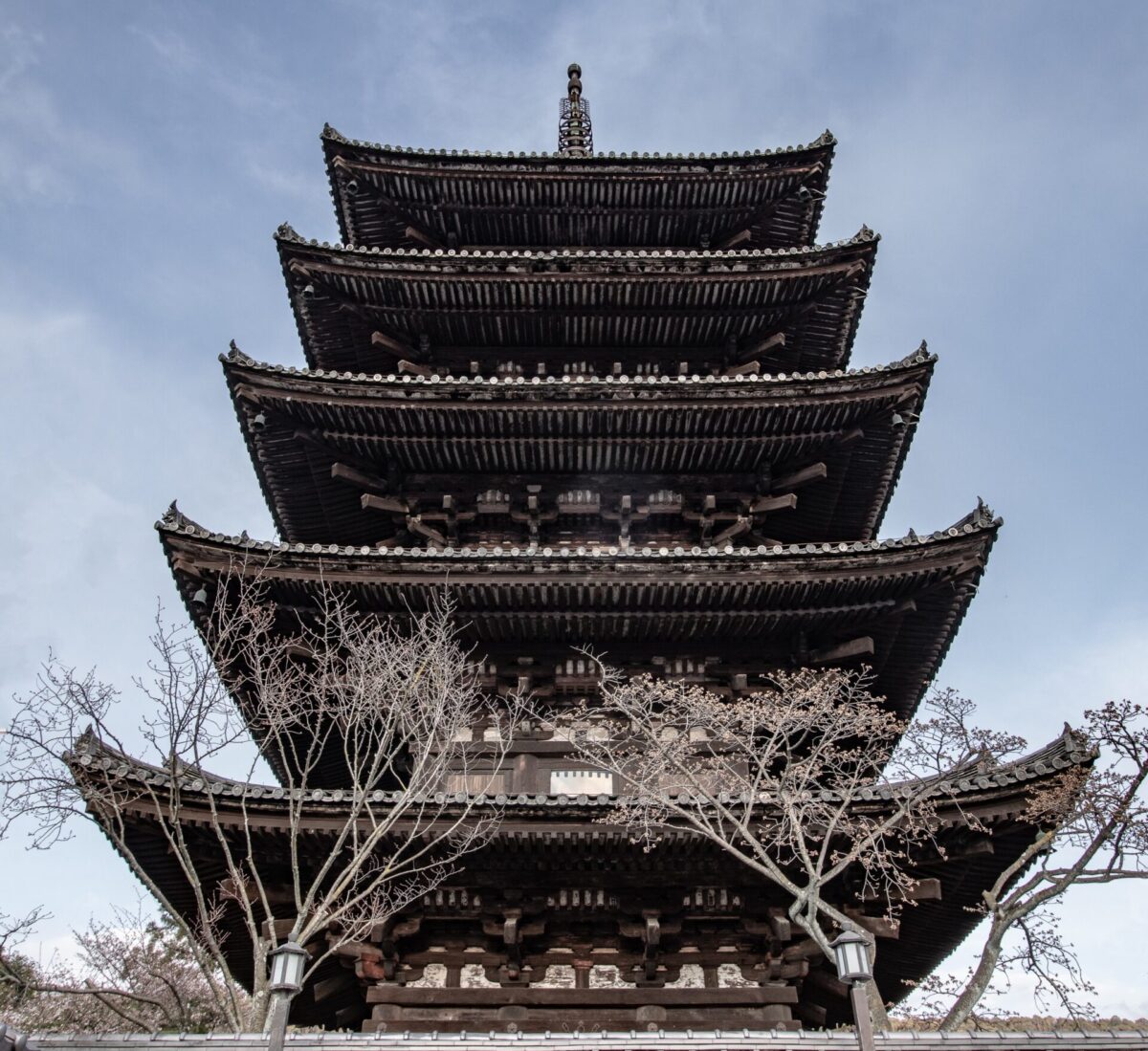
Located a 15-minute walk from JR Kyoto Station, To-ji is an ancient Buddhist temple which is officially designated as a UNESCO World Heritage Site. Originally built in 796, this beautiful temple boasts a history of more than 1,200 years. One of the highlights of the temple is the iconic five-story pagoda which is known as Japan’s tallest wooden structure. The original pagoda was built in the late 9th century but suffered damage and burned down in big fires several times since then. What we can see today is a reconstruction completed during the Edo period (1603-1868). Standing at 54.8 meters, this historic structure is surrounded by peaceful temple grounds offering beautiful seasonal scenery. Spring is a great time to enjoy the blossoms of the 200 cherry trees which are brightly lit up at night with the five-story pagoda in the background.
Address: 1 Kujocho, Minami Ward, Kyoto 601-8473
Hours: 8am – 5pm
Admission: ¥500
2. Shitenno-ji (Osaka)
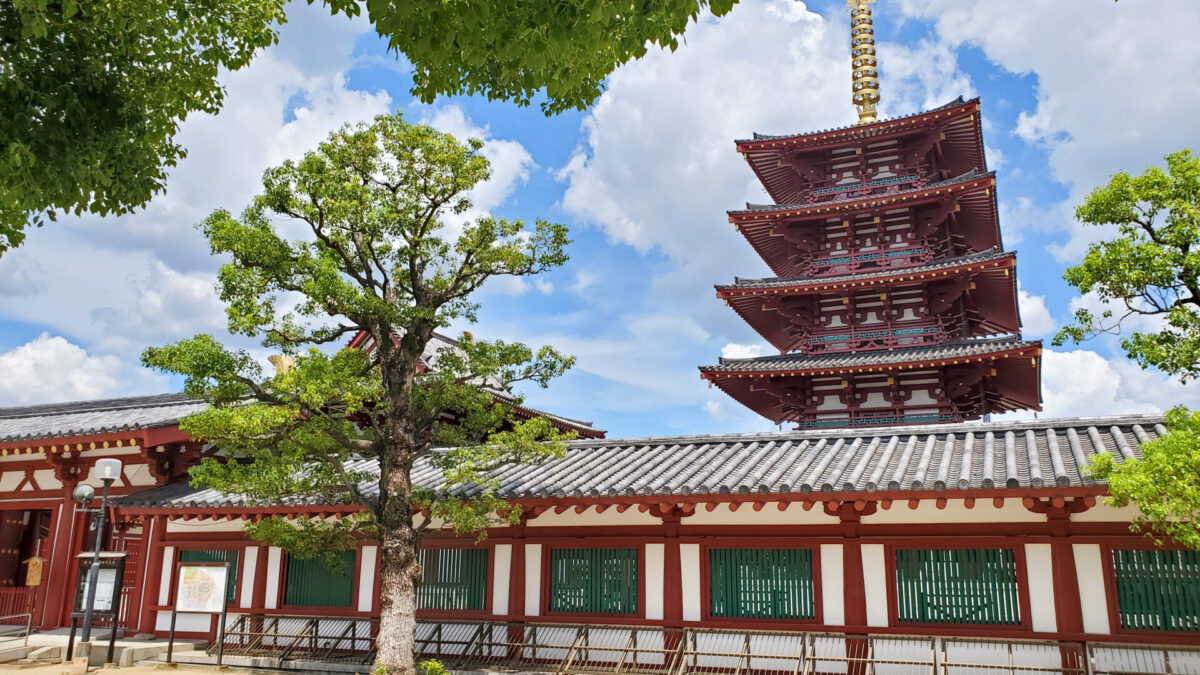
Shitenno-ji is one of Japan’s oldest Buddhist temples and is located in Osaka. This historic temple was founded in 593 by Prince Shotoku, a legendary politician who served under Empress Suiko around the 6th and 7th century. He is also well known for his contribution to the spread of Buddhism across Japan. The sacred temple grounds are home to a great number of beautiful buildings, an informative museum housing national treasures and a lovely Japanese garden which attracts visitors all year round. Originally built in 593, the majestic five-storied pagoda is 39.2 meters tall and was reconstructed in 1959. The inside of the pagoda is open to the public, and from the fifth floor visitors can enjoy panoramic views of Osaka city.
Address: 1-11-18 Shitennoji, Tennoji Ward, Osaka 543-0051
Hours: 8:30am – 4:30pm (April – September), 8:30am – 4pm (October – March)
Admission: ¥300 (adult), ¥200 (university/high school student), additional admission for the garden and museum
3. Chureito (Yamanashi)
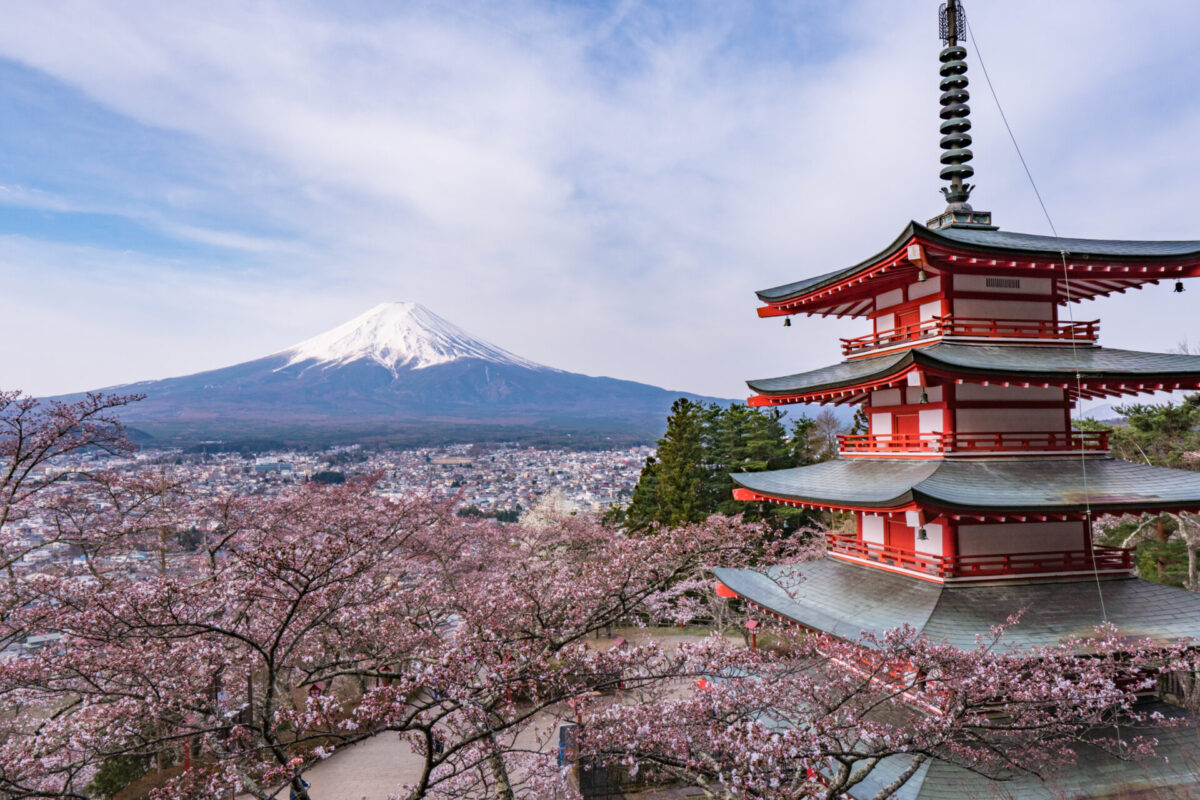
You may have seen pictures of a five-storied red pagoda standing against the backdrop of Mt. Fuji, the very symbol of Japan. This picturesque scenery is often featured in guidebooks, and you can see it in person at Arakurayama Sengen Park in Yamanashi Prefecture! The impressive pagoda was built in 1958 and is dedicated to those who lost their lives in the wars after the Meiji period (1868-1912). In recent years, the pagoda has been attracting tourists from around the world as it stands as a landmark in a peaceful park known for its stunning views of Mt. Fuji. The scenery is particularly enchanting in spring thanks to 650 cherry trees and their delicate flowers blooming throughout the park. Make sure to bring comfortable walking shoes as you will need to climb more than 400 stone steps to enjoy the breathtaking views!
Address: 3353-1 Arakura, Fujiyoshida, Yamanashi 403-0011
Hours: 24 hours
Admission: Free. Free parking is available as well
4. Yasaka (Kyoto)
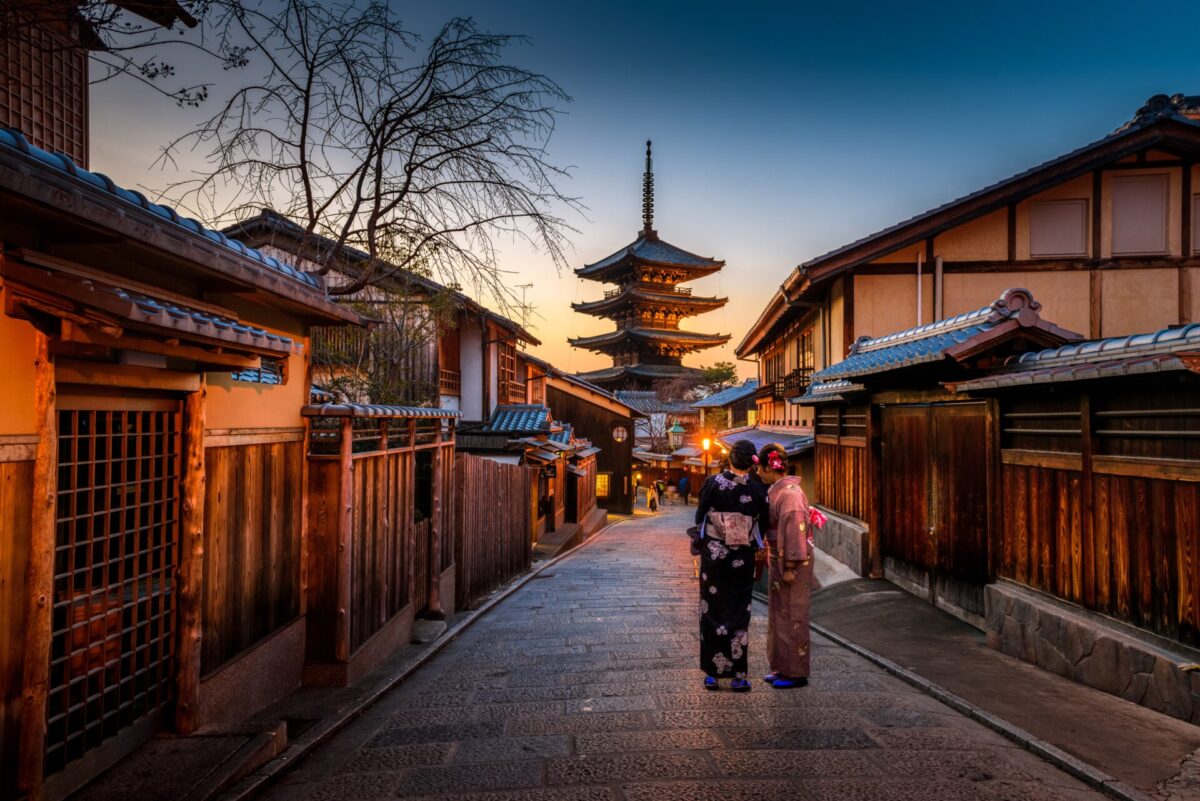
Yasaka (also known as Tower of Yasaka) is a historic five-storied pagoda located at Hokan-ji Temple in Kyoto’s Higashiyama district. Hokan-ji is an ancient Buddhist temple which belongs to the Rinzai school of Buddhism, and it’s believed that the temple was built after orders from Prince Shotoku in 592. Officially designated as an Important Cultural Property, the 46-meter-tall pagoda is known as the third tallest pagoda in Japan. This beloved pagoda serves as a symbol of the Higashiyama district and houses valuable Buddhist statues and paintings. While most of the original buildings at the temple were lost in fires and wars over the years, the current pagoda has luckily survived for more than 580 years since its last reconstruction in 1440.
Address: 388 Kiyomizu Yasaka Kamimachi, Higashiyama Ward, Kyoto 605-0862
Hours: 10am – 4pm
Admission: ¥500 (adult)
5. Itsukushima (Hiroshima)
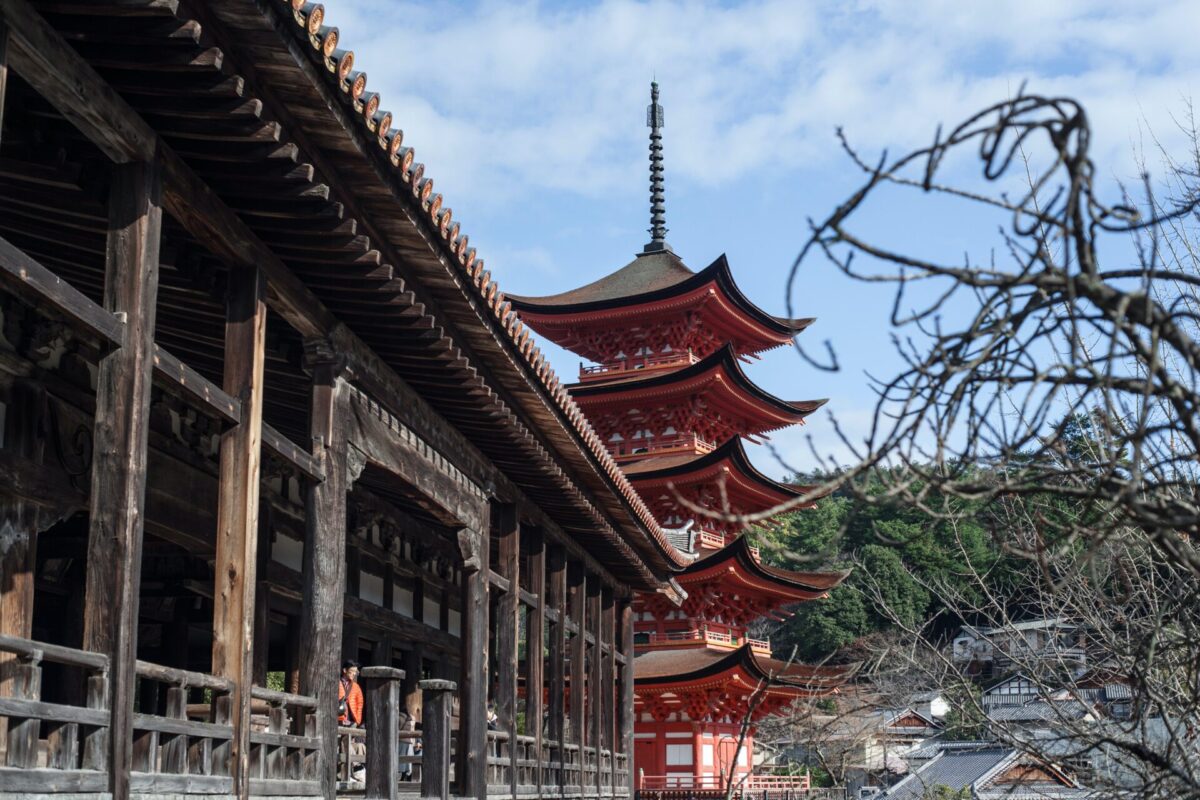
Itsukushima Shrine is a sacred Shinto shrine which is located on Miyajima, a scenic island off the coast of Hatsukaichi city in Hiroshima Prefecture. Along with Hiroshima Peace Memorial Museum and Atomic Bomb Dome, this historic shrine is one of the most visited tourist attractions in Hiroshima and is listed as an official UNESCO World Heritage Site. Among international tourists, Miyajima is well known for its iconic red torii gate which at high tide seems to be floating in the sea, but there is much more to explore on this beautiful island full of history, local delicacies and sweeping ocean vistas. Originally built in 1407, Itsukushima Pagoda is another notable site on Miyajima. Standing at 27.6 meters, this five-story pagoda displays an interesting fusion of traditional Japanese architecture and Chinese influence.
Address: 1-1 Miyajimacho, Hatsukaichi, Hiroshima 739-0588
The inside of the pagoda is not open to the public
Japan Wonder Travel Tours
Japan Wonder Travel is a travel agency that offers guided tours throughout Japan.
From private walking tours to delicious Food and Drink tours, we can help you organize the best tours just for you! If you want to explore Japan and learn more about the history and backstories of each area you are visiting, our knowledgeable and friendly English speaking guides will happily take you to the best spots!
In addition, we can provide you with any assistance you may need for your upcoming trip to Japan, so please feel free to contact us if yu have any questions or need some help!
▶Tokyo Tsukiji Fish Market Food and Drink Tour
Explore the most lively and popular fish market in Tokyo and try some of the local’s favorite street foods and sake with one of our friendly and knowledgeable English speaking guides!

▶Tokyo 1–Day Highlights Private Walking Tour (8 Hours)
There’s no better way to explore an area than taking a tour with a knowledgeable local guide. You will have the chance to learn about the history and interesting background stories of Tokyo, as well as discover some hidden gems which can be hard to do without a guide.

▶Mt. Fuji Day Trip Bus Tour from Tokyo
Experience the breathtaking views of Mt. Fuji by visiting the highlights of the area on our guided sightseeing bus tour! Departing from Shinjuku in central Tokyo, you can travel comfortably to all of the best spots in the area by bus.

Follow us on Instagram, Facebook, and Twitter for more travel inspiration. Or tag us to get featured!
Happy traveling!
Other articles you might be interested in
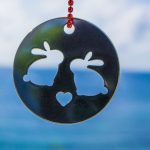
Miho Shimizu is a Japanese freelance writer settled in Shizuoka with her husband and two rabbits. Fascinated with traveling at the age of 18, she has spent most of her long holidays exploring incredible spots around Japan. Also love to listen to music, draw, and read novels over a cup of green tea.
This post may contain some affiliate links. When you click through and make a purchase we may receive some commission, at no extra cost to you.
